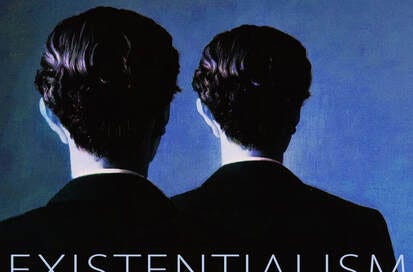Beauty is truth, truth beauty – that is all ye know on earth, and all ye need to know – John Keats
Beauty can be described but never explained. It transcends the limits of reason and thinking. Why is this the case? We might ask, what part beauty plays in the history of philosophy, based as it is on speculative thinking. We conclude that the phenomenon of beauty certainly does have a place, given that it transposes our attention from the whatness to the thatness of things. Our attention is not on what a thing is, but on that it is. We are confronted, once again, with the all-important philosophical query – why is there something rather than nothing?
What we call Being also transcends the limits of thought and brings before the same question. Therefore, as I maintain in this text, Being and Beauty must not be considered as two separate realities.
Because Being isn’t a specific being, it defies explanation. It is what Barfield called the ‘’Unrepresented.’’ It is not easily conceptualized and never will be. However, as we’ve seen, it’s a matter of Imagination and the natural image-making faculty of consciousness that helps bring beings close to Being.
To think about the past inevitably means to form images in the mind. To think about anything including oneself is to do likewise.
What we call “ideas” are nothing of the kind. They are, in fact, images, pure and simple. What a materialist calls ‘’Matter,’’ is itself nothing more than an idea or image. It this sense the materialist, is really a closet idealist. Pity he doesn’t know it.
The point is that we are profoundly Aesthetic beings. Or, in other words, Being is an Aesthetic concept.
Taking Barfield seriously, we see that one reason for Being’s obscurity is our inability to commune with it and, let it work on our symbolic psyche. There is no invocation in language or art and, therefore, no reciprocal discourse.
This lack effects consciousness drastically, keeping us locked within the Problematic. If Being is “nothingness,” it’s because we want it that way.
Despite our neglect and symbolic impoverishment, we retain in our depths an intuition of Wholeness and Totality. It’s the natural consequence of our proximity to things as they exist around us. The blossom and fruit on the branch exist because of the twig, bough and trunk, which exist because of the roots. The tree exists because of the soil, which sits atop the ground, which exists as the surface of the earth, which revolves in space, which exists because of other forces at work, and so on. It’s empirically verifiable despite the fact that we rarely if ever articulate the wider context of anything. It’s too bad, since Being is that Totum made invisible by proximity. Heidegger’s later writings explore this, contextualizing Dasein in spatial as well as temporal terms.
Urbanized Das Man is certainly not inclined to give Being the attention it deserves. He’s surrounded by too many beings for that. He’s far too ungrateful for being alive, and too proud of his inauthenticity. As Nietzsche might have put it, he’s still angry at God for being dead.





